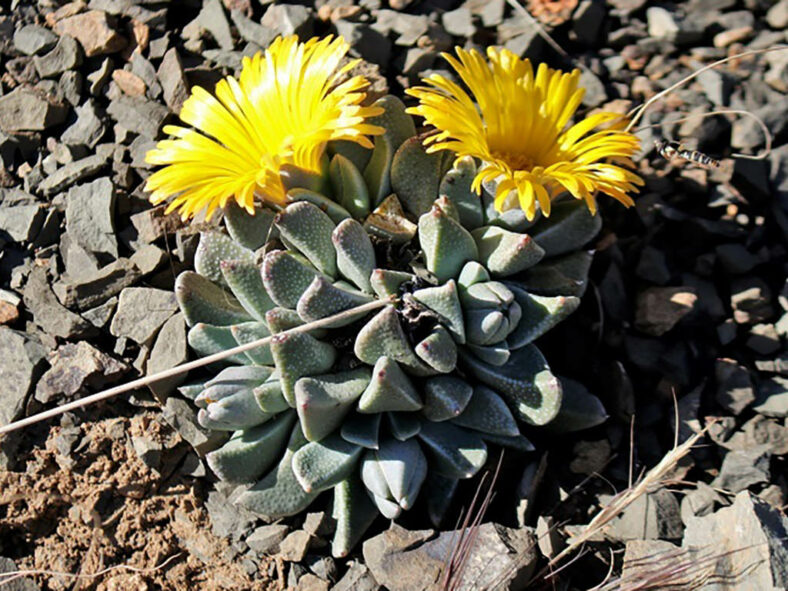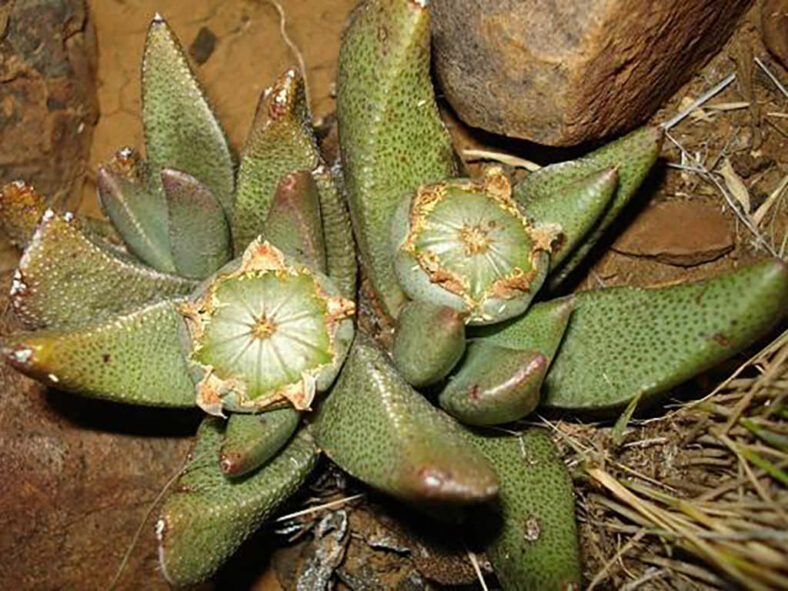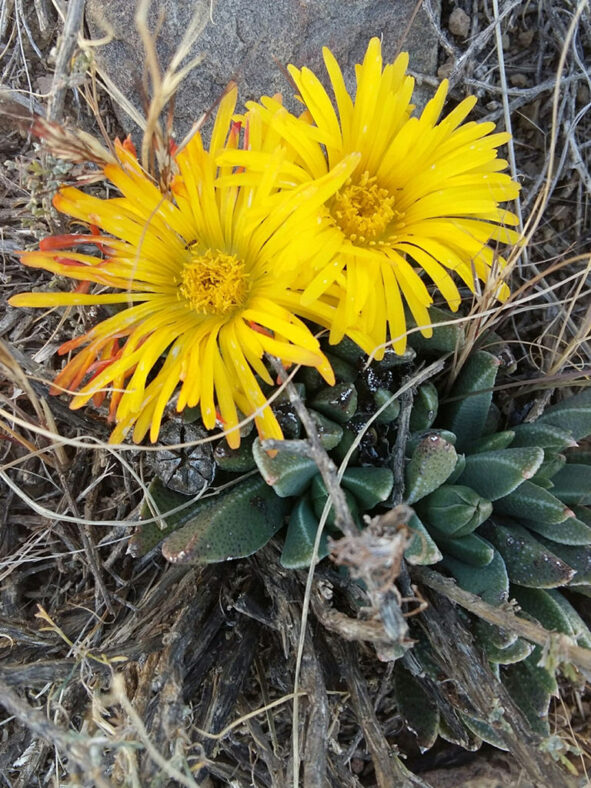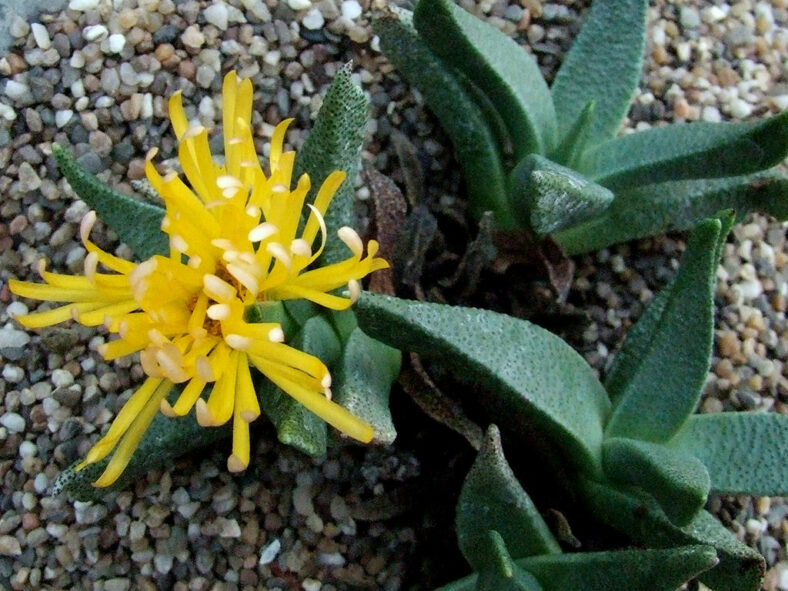Rabiea albinota is a stunning plant that requires minimal care and can be grown in a pot or rock garden. However, it's worth noting that the dried plant can be used as a hallucinogenic additive to tobacco, which is sometimes smoked or consumed as snuff.
Scientific Name
Rabiea albinota (Haw.) N.E.Br.
Synonym(s)
Aloinopsis albinota, Mesembryanthemum albinotum, Nananthus albinotus
Scientific Classification
Family: Aizoaceae
Subfamily: Ruschioideae
Tribe: Ruschieae
Genus: Rabiea
Etymology
The specific epithet "albinota" (pronounced aL-bih-NO-tuh) means "having white marks" and refers to the white-spotted leaves of this species.
Origin
Rabiea albinota is native to South Africa. It occurs in rocky outcrops of karoo sediments in the Western Cape, Eastern Cape, and Free State provinces.
Description
Rabiea albinota is a dwarf succulent with short stems and pairs of erect, greyish-green leaves thickly marked with small, whitish, raised dots, especially on the edges and keel. It can grow up to 3.2 inches (8 cm) tall, forming a dense clump over time. The leaves are triangular in cross-section and can grow up to 1.25 inches (3.2 cm) long and 0.4 inches (1 cm) wide, tapering to a sharp point.
During the late fall and winter, Rabiea albinota produces solitary flowers with numerous linear, yellow petals. The flowers can reach a diameter of 1.5 inches (3.8 cm). The fruits are reddish-brown, woody capsules that are flattish-conical in shape, with raised sutures on top. They have 7 to 10 locules and can grow up to 0.5 inches (1.2 cm) in diameter.

How to Grow and Care for Rabiea albinota
Light: Rabiea albinota requires bright light but not too much direct sunlight. So, a windowsill that receives 4 to 5 hours of direct sunlight in the morning and partial shade in the afternoon will be a perfect spot for indoor growing.
Soil: The plant thrives in porous soil, allowing the water to drain away quickly. Therefore, use commercial soil for succulents or make your own well-draining mix.
Temperature: As long as there is plenty of fresh air, high temperatures are not a problem for this plant. Additionally, it is able to withstand frost. It grows best in USDA Plant Hardiness Zones 7a to 10b, with average minimum winter temperatures ranging from 0°F to 40°F (-17.8°C to 4.4°C).
Watering: To keep Rabiea albinota healthy, it's essential to know when, how much, and how often to water it. During the dormant period, usually in winter, the plant requires little or no water. From spring to fall, water it thoroughly but allow the soil to dry between waterings.
Fertilizing: As long as you repot this plant every two years, it does not need fertilizer.
Repotting: Even if it can stay happy in the same pot for years, once in a while, you can repot your plant to give it more space anytime during the growing season. However, the best time is at the beginning of the growing season.
Propagation: One way to propagate this plant is by stem cuttings during the growing season, which is quite simple. Another option is to start it from seeds by sowing them in well-draining soil during the spring.
Learn more at How to Grow and Care for Mesembs.
Toxicity of Rabiea albinota
Rabiea albinota is considered non-toxic and safe around kids and pets.
Links
- Back to genus Rabiea
- Succupedia: Browse succulents by Scientific Name, Common Name, Genus, Family, USDA Hardiness Zone, Origin, or cacti by Genus
Photo Gallery
Click on a photo to see a larger version.


